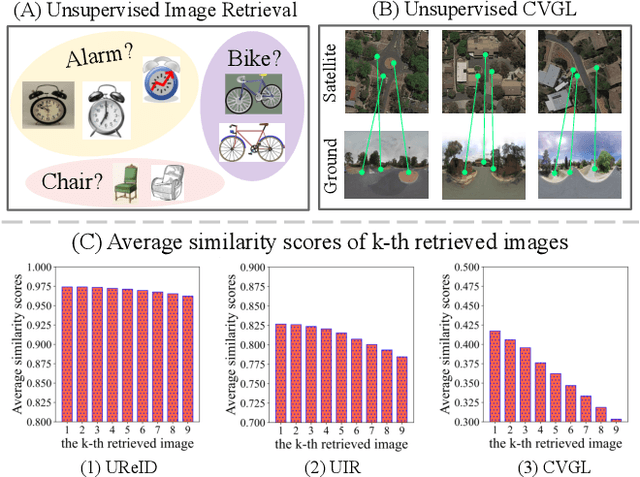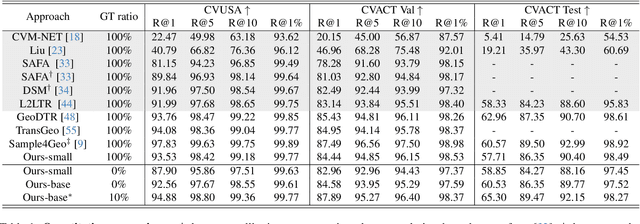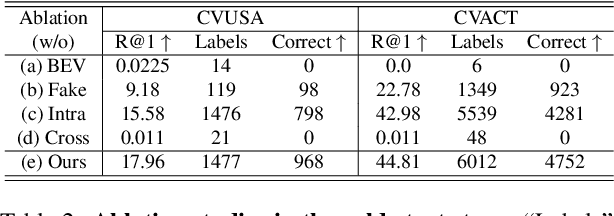Guopeng Li
Hans
Step1X-Edit: A Practical Framework for General Image Editing
Apr 24, 2025Abstract:In recent years, image editing models have witnessed remarkable and rapid development. The recent unveiling of cutting-edge multimodal models such as GPT-4o and Gemini2 Flash has introduced highly promising image editing capabilities. These models demonstrate an impressive aptitude for fulfilling a vast majority of user-driven editing requirements, marking a significant advancement in the field of image manipulation. However, there is still a large gap between the open-source algorithm with these closed-source models. Thus, in this paper, we aim to release a state-of-the-art image editing model, called Step1X-Edit, which can provide comparable performance against the closed-source models like GPT-4o and Gemini2 Flash. More specifically, we adopt the Multimodal LLM to process the reference image and the user's editing instruction. A latent embedding has been extracted and integrated with a diffusion image decoder to obtain the target image. To train the model, we build a data generation pipeline to produce a high-quality dataset. For evaluation, we develop the GEdit-Bench, a novel benchmark rooted in real-world user instructions. Experimental results on GEdit-Bench demonstrate that Step1X-Edit outperforms existing open-source baselines by a substantial margin and approaches the performance of leading proprietary models, thereby making significant contributions to the field of image editing.
Energy Score-based Pseudo-Label Filtering and Adaptive Loss for Imbalanced Semi-supervised SAR target recognition
Nov 06, 2024



Abstract:Automatic target recognition (ATR) is an important use case for synthetic aperture radar (SAR) image interpretation. Recent years have seen significant advancements in SAR ATR technology based on semi-supervised learning. However, existing semi-supervised SAR ATR algorithms show low recognition accuracy in the case of class imbalance. This work offers a non-balanced semi-supervised SAR target recognition approach using dynamic energy scores and adaptive loss. First, an energy score-based method is developed to dynamically select unlabeled samples near to the training distribution as pseudo-labels during training, assuring pseudo-label reliability in long-tailed distribution circumstances. Secondly, loss functions suitable for class imbalances are proposed, including adaptive margin perception loss and adaptive hard triplet loss, the former offsets inter-class confusion of classifiers, alleviating the imbalance issue inherent in pseudo-label generation. The latter effectively tackles the model's preference for the majority class by focusing on complex difficult samples during training. Experimental results on extremely imbalanced SAR datasets demonstrate that the proposed method performs well under the dual constraints of scarce labels and data imbalance, effectively overcoming the model bias caused by data imbalance and achieving high-precision target recognition.
TAS: Distilling Arbitrary Teacher and Student via a Hybrid Assistant
Oct 16, 2024



Abstract:Most knowledge distillation (KD) methodologies predominantly focus on teacher-student pairs with similar architectures, such as both being convolutional neural networks (CNNs). However, the potential and flexibility of KD can be greatly improved by expanding it to novel Cross-Architecture KD (CAKD), where the knowledge of homogeneous and heterogeneous teachers can be transferred flexibly to a given student. The primary challenge in CAKD lies in the substantial feature gaps between heterogeneous models, originating from the distinction of their inherent inductive biases and module functions. To this end, we introduce an assistant model as a bridge to facilitate smooth feature knowledge transfer between heterogeneous teachers and students. More importantly, within our proposed design principle, the assistant model combines the advantages of cross-architecture inductive biases and module functions by merging convolution and attention modules derived from both student and teacher module functions. Furthermore, we observe that heterogeneous features exhibit diverse spatial distributions in CAKD, hindering the effectiveness of conventional pixel-wise mean squared error (MSE) loss. Therefore, we leverage a spatial-agnostic InfoNCE loss to align features after spatial smoothing, thereby improving the feature alignments in CAKD. Our proposed method is evaluated across some homogeneous model pairs and arbitrary heterogeneous combinations of CNNs, ViTs, and MLPs, achieving state-of-the-art performance for distilled models with a maximum gain of 11.47% on CIFAR-100 and 3.67% on ImageNet-1K. Our code and models will be released.
Unleashing Unlabeled Data: A Paradigm for Cross-View Geo-Localization
Mar 21, 2024



Abstract:This paper investigates the effective utilization of unlabeled data for large-area cross-view geo-localization (CVGL), encompassing both unsupervised and semi-supervised settings. Common approaches to CVGL rely on ground-satellite image pairs and employ label-driven supervised training. However, the cost of collecting precise cross-view image pairs hinders the deployment of CVGL in real-life scenarios. Without the pairs, CVGL will be more challenging to handle the significant imaging and spatial gaps between ground and satellite images. To this end, we propose an unsupervised framework including a cross-view projection to guide the model for retrieving initial pseudo-labels and a fast re-ranking mechanism to refine the pseudo-labels by leveraging the fact that ``the perfectly paired ground-satellite image is located in a unique and identical scene". The framework exhibits competitive performance compared with supervised works on three open-source benchmarks. Our code and models will be released on https://github.com/liguopeng0923/UCVGL.
Pattern retrieval of traffic congestion using graph-based associations of traffic domain-specific features
Nov 28, 2023



Abstract:The fast-growing amount of traffic data brings many opportunities for revealing more insightful information about traffic dynamics. However, it also demands an effective database management system in which information retrieval is arguably an important feature. The ability to locate similar patterns in big datasets potentially paves the way for further valuable analyses in traffic management. This paper proposes a content-based retrieval system for spatiotemporal patterns of highway traffic congestion. There are two main components in our framework, namely pattern representation and similarity measurement. To effectively interpret retrieval outcomes, the paper proposes a graph-based approach (relation-graph) for the former component, in which fundamental traffic phenomena are encoded as nodes and their spatiotemporal relationships as edges. In the latter component, the similarities between congestion patterns are customizable with various aspects according to user expectations. We evaluated the proposed framework by applying it to a dataset of hundreds of patterns with various complexities (temporally and spatially). The example queries indicate the effectiveness of the proposed method, i.e. the obtained patterns present similar traffic phenomena as in the given examples. In addition, the success of the proposed approach directly derives a new opportunity for semantic retrieval, in which expected patterns are described by adopting the relation-graph notion to associate fundamental traffic phenomena.
Distil the informative essence of loop detector data set: Is network-level traffic forecasting hungry for more data?
Oct 31, 2023Abstract:Network-level traffic condition forecasting has been intensively studied for decades. Although prediction accuracy has been continuously improved with emerging deep learning models and ever-expanding traffic data, traffic forecasting still faces many challenges in practice. These challenges include the robustness of data-driven models, the inherent unpredictability of traffic dynamics, and whether further improvement of traffic forecasting requires more sensor data. In this paper, we focus on this latter question and particularly on data from loop detectors. To answer this, we propose an uncertainty-aware traffic forecasting framework to explore how many samples of loop data are truly effective for training forecasting models. Firstly, the model design combines traffic flow theory with graph neural networks, ensuring the robustness of prediction and uncertainty quantification. Secondly, evidential learning is employed to quantify different sources of uncertainty in a single pass. The estimated uncertainty is used to "distil" the essence of the dataset that sufficiently covers the information content. Results from a case study of a highway network around Amsterdam show that, from 2018 to 2021, more than 80\% of the data during daytime can be removed. The remaining 20\% samples have equal prediction power for training models. This result suggests that indeed large traffic datasets can be subdivided into significantly smaller but equally informative datasets. From these findings, we conclude that the proposed methodology proves valuable in evaluating large traffic datasets' true information content. Further extensions, such as extracting smaller, spatially non-redundant datasets, are possible with this method.
A Comparative Conflict Resolution Dataset Derived from Argoverse-2: Scenarios with vs. without Autonomous Vehicles
Aug 26, 2023Abstract:As the deployment of autonomous vehicles (AVs) becomes increasingly prevalent, ensuring safe and smooth interactions between AVs and other human agents is of critical importance. In the urban environment, how vehicles resolve conflicts has significant impacts on both driving safety and traffic efficiency. To expedite the studies on evaluating conflict resolution in AV-involved and AV-free scenarios at intersections, this paper presents a high-quality dataset derived from the open Argoverse-2 motion forecasting data. First, scenarios of interest are selected by applying a set of heuristic rules regarding post-encroachment time (PET), minimum distance, trajectory crossing, and speed variation. Next, the quality of the raw data is carefully examined. We found that position and speed data are not consistent in Argoverse-2 data and its improper processing induced unnecessary errors. To address these specific problems, we propose and apply a data processing pipeline to correct and enhance the raw data. As a result, 5k+ AV-involved scenarios and 16k+ AV-free scenarios with smooth and consistent position, speed, acceleration, and heading direction data are obtained. Further assessments show that this dataset comprises diverse and balanced conflict resolution regimes. This informative dataset provides a valuable resource for researchers and practitioners in the field of autonomous vehicle assessment and regulation. The dataset is openly available via https://github.com/RomainLITUD/conflict_resolution_dataset.
Towards Generic and Controllable Attacks Against Object Detection
Jul 23, 2023Abstract:Existing adversarial attacks against Object Detectors (ODs) suffer from two inherent limitations. Firstly, ODs have complicated meta-structure designs, hence most advanced attacks for ODs concentrate on attacking specific detector-intrinsic structures, which makes it hard for them to work on other detectors and motivates us to design a generic attack against ODs. Secondly, most works against ODs make Adversarial Examples (AEs) by generalizing image-level attacks from classification to detection, which brings redundant computations and perturbations in semantically meaningless areas (e.g., backgrounds) and leads to an emergency for seeking controllable attacks for ODs. To this end, we propose a generic white-box attack, LGP (local perturbations with adaptively global attacks), to blind mainstream object detectors with controllable perturbations. For a detector-agnostic attack, LGP tracks high-quality proposals and optimizes three heterogeneous losses simultaneously. In this way, we can fool the crucial components of ODs with a part of their outputs without the limitations of specific structures. Regarding controllability, we establish an object-wise constraint that exploits foreground-background separation adaptively to induce the attachment of perturbations to foregrounds. Experimentally, the proposed LGP successfully attacked sixteen state-of-the-art object detectors on MS-COCO and DOTA datasets, with promising imperceptibility and transferability obtained. Codes are publicly released in https://github.com/liguopeng0923/LGP.git
Large Car-following Data Based on Lyft level-5 Open Dataset: Following Autonomous Vehicles vs. Human-driven Vehicles
May 30, 2023Abstract:Car-Following (CF), as a fundamental driving behaviour, has significant influences on the safety and efficiency of traffic flow. Investigating how human drivers react differently when following autonomous vs. human-driven vehicles (HV) is thus critical for mixed traffic flow. Research in this field can be expedited with trajectory datasets collected by Autonomous Vehicles (AVs). However, trajectories collected by AVs are noisy and not readily applicable for studying CF behaviour. This paper extracts and enhances two categories of CF data, HV-following-AV (H-A) and HV-following-HV (H-H), from the open Lyft level-5 dataset. First, CF pairs are selected based on specific rules. Next, the quality of raw data is assessed by anomaly analysis. Then, the raw CF data is corrected and enhanced via motion planning, Kalman filtering, and wavelet denoising. As a result, 29k+ H-A and 42k+ H-H car-following segments are obtained, with a total driving distance of 150k+ km. A diversity assessment shows that the processed data cover complete CF regimes for calibrating CF models. This open and ready-to-use dataset provides the opportunity to investigate the CF behaviours of following AVs vs. HVs from real-world data. It can further facilitate studies on exploring the impact of AVs on mixed urban traffic.
 Add to Chrome
Add to Chrome Add to Firefox
Add to Firefox Add to Edge
Add to Edge